Table of content
- Bao Tang: The Elixir of Life
- Zhu Zhou: Comfort in a Bowl
- Bao Tang: A Symphony of Proteins and Herbs
- Zhu Zhou: The Humble Grain Takes Center Stage
- Bao Tang: The Alchemy of Slow Simmering
- Zhu Zhou: Stirring and Consistency
- Bao Tang: Clarity and Depth
- Zhu Zhou: Homogeneous Creaminess
- Bao Tang: A Meal in Itself
- Zhu Zhou: Humble yet Versatile
- Bao Tang: Preventative Medicine
- Zhu Zhou: Gentle Nourishment
- Bao Tang: Cantonese Mastery
- Zhu Zhou: Northern Simplicity
- Bao Tang: Global Influences
- Zhu Zhou: Trendy Bowls
- Bao Tang: “The Longer, The Better”
- Zhu Zhou: “Only for the Sick”
The Art of Culinary Distinction: Unraveling the Differences Between Chinese Soup-Making (Bao Tang) and Porridge Preparation (Zhu Zhou)*
Chinese cuisine is renowned for its emphasis on balance, texture, and nourishment, with cooking techniques often steeped in centuries of tradition. Two foundational pillars of this culinary heritage are bao tang (煲汤), or simmered soup, and zhu zhou* (煮粥), or rice porridge. While both involve slow-cooking liquids with ingredients, they serve distinct purposes, textures, and cultural roles. This article delves into the nuances of these techniques, exploring their historical roots, preparation methods, and culinary outcomes. By dissecting their differences, we gain a deeper appreciation for the philosophy underlying Chinese gastronomy.
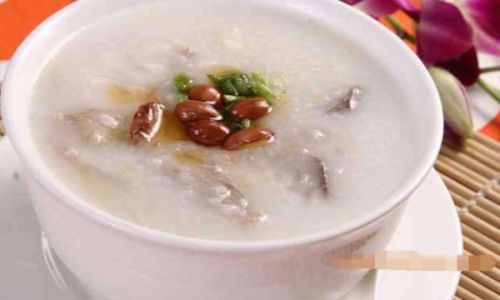
Historical and Cultural Context
Bao Tang: The Elixir of Life
Chinese soups, or tang, have been revered for millennia as symbols of health and vitality. Ancient texts like the Huangdi Neijing (Yellow Emperor’s Inner Canon) emphasize the therapeutic properties of broths, linking them to yin-yang balance and qi circulation. Bao tang, in particular, refers to soups simmered for hours, sometimes days, in clay pots or ceramic vessels. This slow-cooking process is believed to extract the jing hua (essence) of ingredients—such as bones, herbs, and roots—creating a nourishing elixir.
Zhu Zhou: Comfort in a Bowl
Porridge, or zhou, traces its roots to Neolithic China, where early humans boiled grains in water to create a filling, easy-to-digest meal. Over time, it evolved into a culinary staple, especially in regions with harsh winters or agricultural challenges. Unlike soups, porridge was often associated with frugality and simplicity, though it later gained prominence as a healing food. Today, zhu zhou remains a beloved breakfast dish and a go-to remedy for ailments.
Ingredient Selection: Proteins vs. Grains
Bao Tang: A Symphony of Proteins and Herbs
The foundation of a good bao tang lies in its ingredients. Meats like pork, chicken, or beef are typically used, often paired with bones to enrich the broth. Herbal additions—such as goji berries, ginseng, or jujube dates—impart medicinal qualities. For instance, lao huo tang (old fire soup) might include black chicken, wolfberries, and codonopsis roots, blending umami flavors with earthy sweetness.
Zhu Zhou: The Humble Grain Takes Center Stage
Porridge prioritizes grains, with rice being the most common base. Short-grain varieties like japonica rice are preferred for their starch content, which thickens the liquid into a creamy consistency. Ingredients like meat, fish, or vegetables are added for flavor but remain secondary to the grain. A classic example is pi fan zhou (leftover rice porridge), where day-old rice is rehydrated with water and simmered until velvety.
Cooking Techniques: Time, Temperature, and Tools
Bao Tang: The Alchemy of Slow Simmering
Bao tang demands patience. Ingredients are blanched to remove impurities, then simmered over low heat for 4–1 hours in a zisha (purple clay) pot. The slow cooking allows collagen from bones to melt into gelatin, creating a viscous, flavorful broth. Fire management is critical: a steady, gentle heat prevents the liquid from boiling vigorously, which could cloud the soup or destroy delicate herbs.
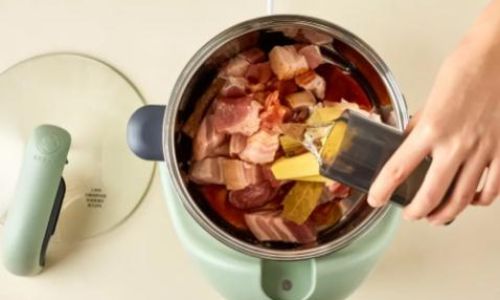
Zhu Zhou: Stirring and Consistency
Porridge requires constant attention to prevent sticking. Rice is first rinsed to remove excess starch, then cooked in a 1:8 rice-to-water ratio. As the mixture heats, stirring with a wooden spatula ensures even thickening. Some cooks add a drop of oil to prevent foaming. Unlike soups, porridge is cooked until the grains disintegrate, yielding a texture that ranges from loose (like gruel) to thick (like oatmeal).
Texture and Viscosity: Broth vs. Cream
Bao Tang: Clarity and Depth
A well-made bao tang is prized for its crystalline appearance and layered flavors. The broth should be clear yet rich, with a silky mouthfeel from dissolved collagen. Ingredients like chicken feet or pork hocks contribute to this texture, while herbs add aromatic complexity. The soup is typically served as a standalone dish, accompanied by a small plate of you cai (dipping sauces) for meats.
Zhu Zhou: Homogeneous Creaminess
Porridge achieves a uniform consistency, with individual grains barely discernible. The texture varies regionally: Cantonese zhou is loose and soup-like, while Northern Chinese versions might resemble dough. Toppings like pickled vegetables, fried dough sticks (you tiao), or a soft-boiled egg add contrast. Unlike soup, porridge is often eaten with a spoon and may be served plain or sweet (e.g., with sugar and red beans).
Culinary Roles: Nourishment vs. Sustenance
Bao Tang: A Meal in Itself
In Chinese dining culture, bao tang is often the centerpiece of a multi-course meal. Its richness balances lighter dishes like steamed vegetables or stir-fries. The soup’s protein and mineral content make it a symbol of hospitality, with hosts often serving it to guests as a gesture of care.
Zhu Zhou: Humble yet Versatile
Porridge is more utilitarian. It is consumed across meals—breakfast, lunch, or dinner—and adapts to seasonal ingredients. During illness, plain zhou is recommended for its digestibility, while festive versions might include abalone or seafood. In some regions, porridge is even fermented into jiu niang (rice wine), highlighting its transformative potential.
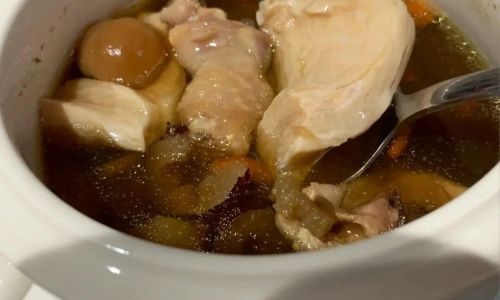
Health Philosophies: Tonics vs. Digestives
Bao Tang: Preventative Medicine
Chinese medicine views bao tang as a tool for yang sheng (nourishing life). Ingredients are chosen to address specific ailments: duck with astragalus root for fatigue, or lotus seeds with pork ribs for insomnia. The prolonged simmering is believed to harmonize the soup’s qi, making it easier for the body to absorb.
Zhu Zhou: Gentle Nourishment
Porridge is seen as a bu pin (tonic) for the spleen and stomach. Its soft texture aids digestion, while added ingredients like ginger or pumpkin provide warmth. During convalescence, zhu zhou is often the first solid food recommended, as it requires minimal energy to process.
Regional Variations: Cantonese Precision vs. Northern Heartiness
Bao Tang: Cantonese Mastery
Guangdong province is famous for its lao huo tang, where chefs meticulously balance flavors and textures. A classic example is bu zhi ji tang (ginseng chicken soup), where a whole chicken is stuffed with glutinous rice and herbs before simmering.
Zhu Zhou: Northern Simplicity
In Northern China, porridge tends to be thicker and heartier. Xiaomi zhou (millet porridge) is a staple, often served with pickled garlic or scallions. During winter, families might add lamb or mutton for warmth.
Modern Adaptations: Fusion and Innovation
Bao Tang: Global Influences
Contemporary chefs are experimenting with bao tang by incorporating Western ingredients like truffles or quinoa. However, purists argue that such adaptations dilute the soup’s traditional medicinal value.
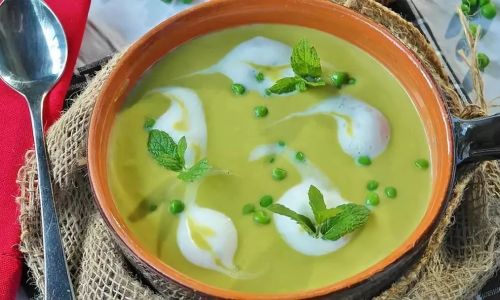
Zhu Zhou: Trendy Bowls
Porridge has seen a resurgence in health-conscious circles, with cafes offering congee bowls topped with avocado, poached eggs, or kimchi. These modern twists blend tradition with global flavors, appealing to younger generations.
Common Misconceptions
Bao Tang: “The Longer, The Better”
While slow cooking is essential, overcooking can destroy nutrients and create a bitter taste. Balance is key.
Zhu Zhou: “Only for the Sick”
Though associated with illness, porridge is a versatile canvas for creativity, as seen in gourmet versions with lobster or truffle oil.
Conclusion: Two Sides of the Same Coin
Bao tang and zhu zhou embody contrasting yet complementary aspects of Chinese cuisine. The former is a celebration of patience, heritage, and holistic healing; the latter, a testament to resourcefulness and comfort. Together, they reflect the duality of Chinese gastronomy—where food is both sustenance and medicine, tradition and innovation. Whether sipping a steaming bowl of lao huo tang or savoring a humble plate of zhu zhou, diners engage with a culinary legacy that nourishes body and soul alike.
Final Thoughts
Understanding the distinction between these two techniques offers insight into the philosophy guiding Chinese cooking. While bao tang and zhu zhou diverge in method and purpose, they share a common thread: the belief that food is a bridge between earth and sky, a medium through which humans harmonize with nature. In a world of fast-paced living, these age-old practices remind us of the value of slowness, intention, and mindfulness—both in the kitchen and beyond.


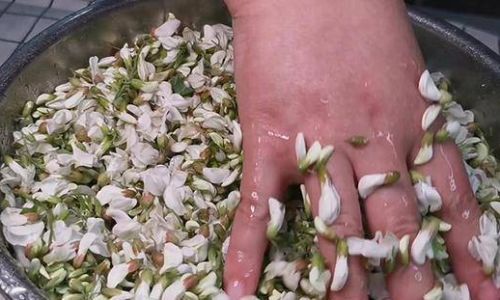
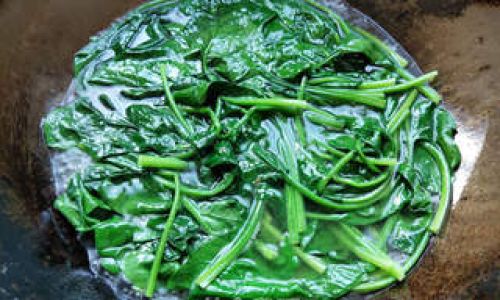
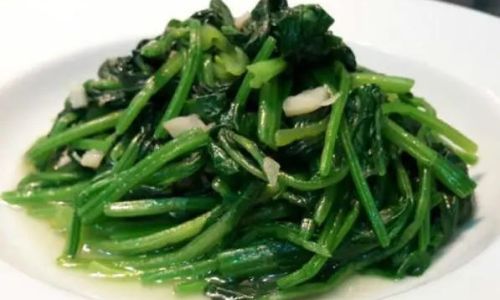
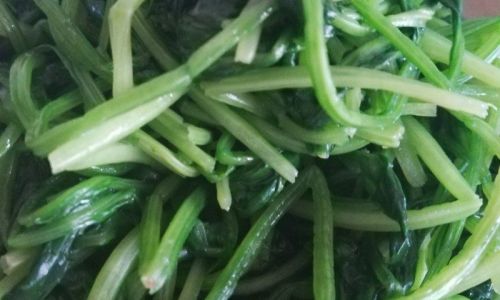
0 comments